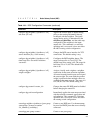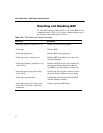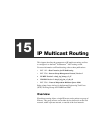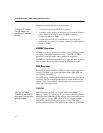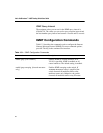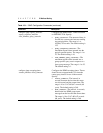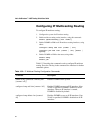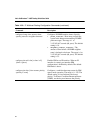
C H A P T E R 15 IP Multicast Routing
277
PIM Sparse Mode (PIM-SM)
You can run either PIM-
DM or PIM-SM on each
VLAN.
Unlike PIM-DM, PIM-SM is an explicit join and prune protocol, and
supports shared trees as well as shortest path trees (SPTs). The routers
must explicitly be joined to one or more groups to enable
communication. This is beneficial for large networks that have group
members sparsely distributed.
Using PIM-SM, the router sends a join message to the rendezvous
point (RP). The RP is a central multicast router that is responsible for
receiving and distributing multicast packets.
When a router has a multicast packet to distribute, it encapsulates the
packet in a unicast message and sends it to the RP. The RP
decapsulates the multicast packet and distributes it among all member
routers.
When a router determines that the multicast rate from a particular
originating router (not the RP) has exceeded a configured threshold,
that router can send an explicit join message to the originating router.
Once this occurs, the receiving router gets the multicast directly from
the sending router, and bypasses the RP.
Static Rendezvous Points (RPs)
If you configure a static
RP in your network,
configure the static RP
on all switches in the
network.
The 480T routing switch allows you to override the PIM bootstrap
message that selects a dynamic RP so that you can define a static RP
in your network. To define a static RP, use the following command:
configure pim crp static <rp address>
PIM Mode Translation
A 480T routing switch functioning as a PMBR (PIM Multicast
Border Router) integrates PIM-SM and PIM-DM traffic separated by
the PMBR.
When forwarding PIM-DM traffic into a PIM-SM network, the
PMBR will notify the RP that the PIM-DM network exists. The
PMBR will then forward PIM-DM multicast packets to the RP, which
will then forward the packets to those routers that have joined the
multicast group.



